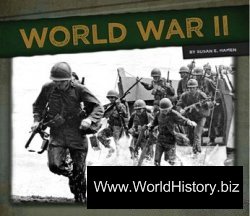NATO see NORTH ATLANTIC TKEA'I'Y ORGANIZATION.
Navarre, Gen Henri E (18981983). Fr. Picked to command the French Expeditionary Corps in Indochina in May 1953. It was hoped that, as a counter-guerrilla expert with experience in Morocco, he would bring a fresh perspective. Along with his deputy, Maj Gen Rene Cogny, Navarre requested nine additional French battalions in order to launch a major offensive, break up the communists’ main forces, and turn over the mopping-up to a strengthened Vietnamese National Army. The proposal came to be known as the Navarre Plan. Striving to seize the initiative, Navarre also authorized the reoccupation and reinforcement of Dien Bien Phu. Implicated in the defeat, he was relieved in June 1954 and retired. WST.
Nazi. Acronym formed from Nationalsozialistische Deutsche Arbeiterpartei (National Socialist German Workers’ Party).
Nazi-Soviet Pact. Non-aggression pact signed in Moscow by foreign ministers von Ribbentrop and Molotov, August 23 1939. Germany and Russia agreed on their respective expansionist plans in Poland and the Baltic states.
Neame, Lt Gen Sir Philip, VC
(1888-1978). Br. Commander Cyrenaica Command during Rommel’s first offensive. Captured with Gen O’Connor by a German reconnaissance patrol, April 7 1941.
Negev see arab-israeli wars.
Neguib, Gen Mohammed (b. l901). Egyptian. Soldier and leader of coup establishing Egyptian Republic, of which he was the first President in 1952. See also Suez canal.
Nehring, Lt Gen Walther (18921983). Ger. Commanded Afrika Korps after capture of Cruewell, at Gazala, Tobruk and Mersa Matruh in June 1942, and fighting on El Alamein Line until wounded at Alam Haifa in August. Commander XC Corps in Tunisian campaign to December 1942, Commander XXIV Panzer Corps, 1943-44, Commander First Panzer Army, March 1945.
Nehru, Jawaharlal (1889-1964). Indian. India’s first prime minister after its independence in 1947.
Nelson. British battleship. Name ship of class; 9 x 16in guns, all forward of the bridge. Best protected battleships of their day. Completed 1927. Served with Home Fleet till 1942, then in Mediterranean, Normandy landings and Far East.
Nerve gas. War gases that attack the central nervous system of the victims. See also chemical
WEAPONS.
Nery, Battle of. Just after dawn on September 1 1914, during the retreat from Mons, “L” Battery of the Royal Horse Artillery was surprised by the advancing German 4th Calvalry Division at Nery, south of Compiegne, France. In the desperate rearguard action which followed, “L” Battery won three vcs. The gun has been preserved by the Imperial War Museum.
“Neutralize” Operation (1967). Intensification of North Vietnamese pressure on the US Marine base at Con Thien, just south of Vietnam’s demilitarized zone, provoked an American relief effort, September 11 to October 31 1967, Operation “Neutralize”. A combined air, army and navy operation, “Neutralize” dropped 40,000 tons of bombs on an area the size of Manhattan, the first application of the SLAM approach.
Neutral Nations Repatriation Commission (NNRC). Established by the armistice which ended the Korean War to take custody in the Demilitarized Zone of those pows who 60 days after the armistice had refused repatriation to their own side. It was composed of five nations, Sweden, Switzerland, Poland, Czechoslovakia and India. The NNRC was to hold the pows for 90 days to allow the nations to which they belonged an opportunity to provide “explanations” which might persuade them to return home. The ultimate disposition of those who refused repatriation at the end of this period was to be decided within 30 days by the political conference to be held under article four of the armistice agreement. The nnrc was to declare the release to civilian status of any pow who had not opted for repatriation or whose disposition had not been agreed by the political conference within 120 days of assuming custody. The pows were to be guarded by Indian troops. This clumsy mechanism reflected the bitter controversy which had developed over the pow issue and delayed the armistice for over a year. CM.
Neutral Nations Supervisory Commission (NNSC). Established by the armistice which ended the Korean War to police the paragraphs of the cease-fire agreement prohibiting the introduction of military reinforcements by either side. It consisted of four senior officers, two nominated by the UN command and two nominated by the communists. It was to establish inspection teams at five ports of entry on either side and could also conduct “special observations and inspections” at places outside the Demilitarized Zone where violations were reported to have occurred. The nnsc was to report to the Military Armistice (Ilommission. The nnsc never worked effectively. CM.
Neutron bomb see enhanced
RADIATION WEAPON (eRW).
Neuve-Chapelle, Battle of. The
First major British set-piece attack of the 1914—18 War was made by Haig’s First Army at Neuve-Chapelle, south of Armentieres, on March 10 1915. Originally conceived as part of a combined offensive, it was decided to proceed independently when French commitments in Champagne precluded their cooperation. Meticulously planned by the First Army staff, the attack, on a narrow 2,000yd (1,800m) front, was intended to eliminate the troublesome salient around Neuve-Chapelle, gain a foothold on Au-bers Ridge and threaten Lille, a key railway junction in the region. The artillery was issued with

100,000 rounds, or one-sixth of the bee’s total shell stocks, for its various tasks. On March 10, after a 35-minute hurricane bombardment, the assaulting brigades of IV Corps and the Indian Corps seized the German front trenches, while the artillery provided a cur-




 World History
World History









